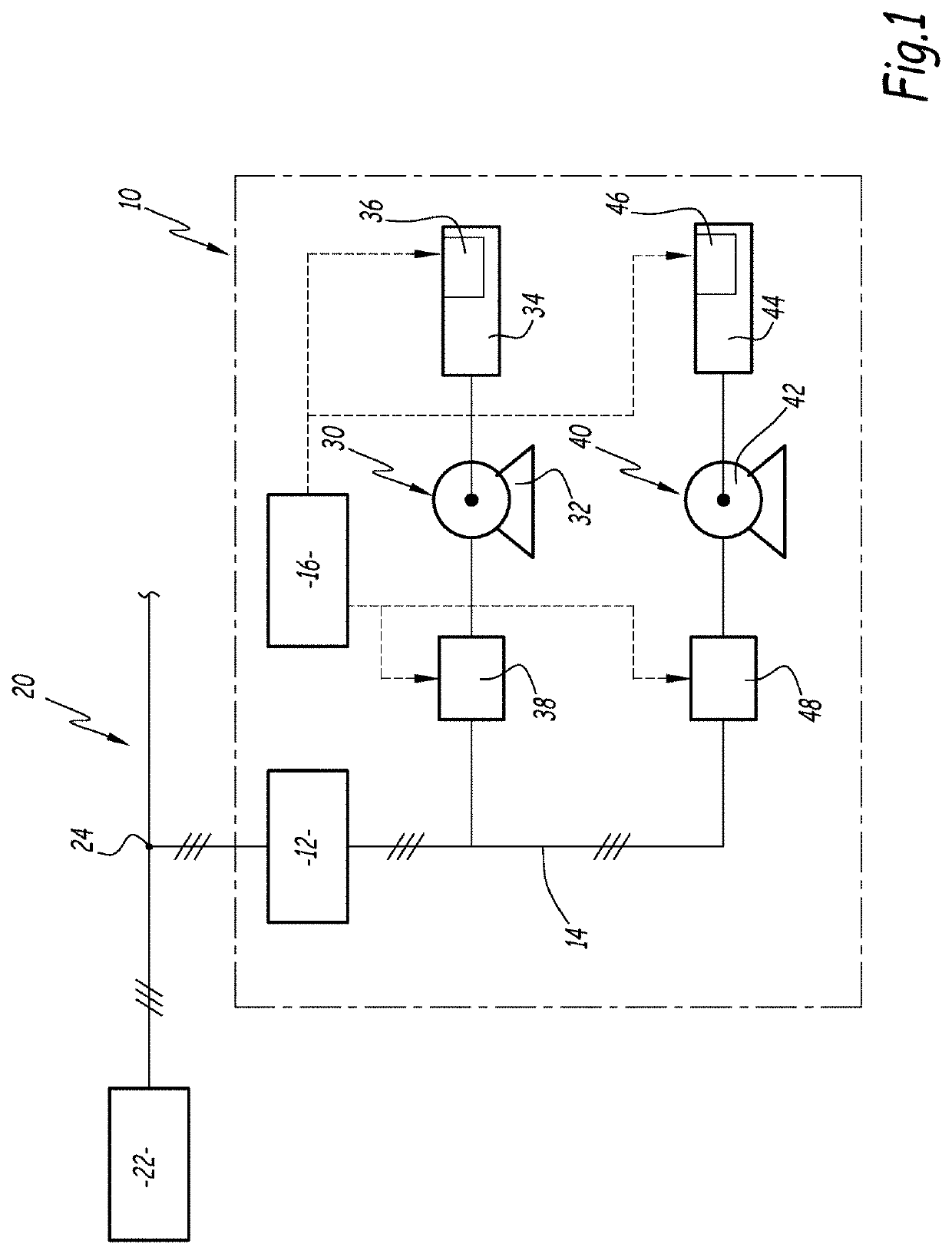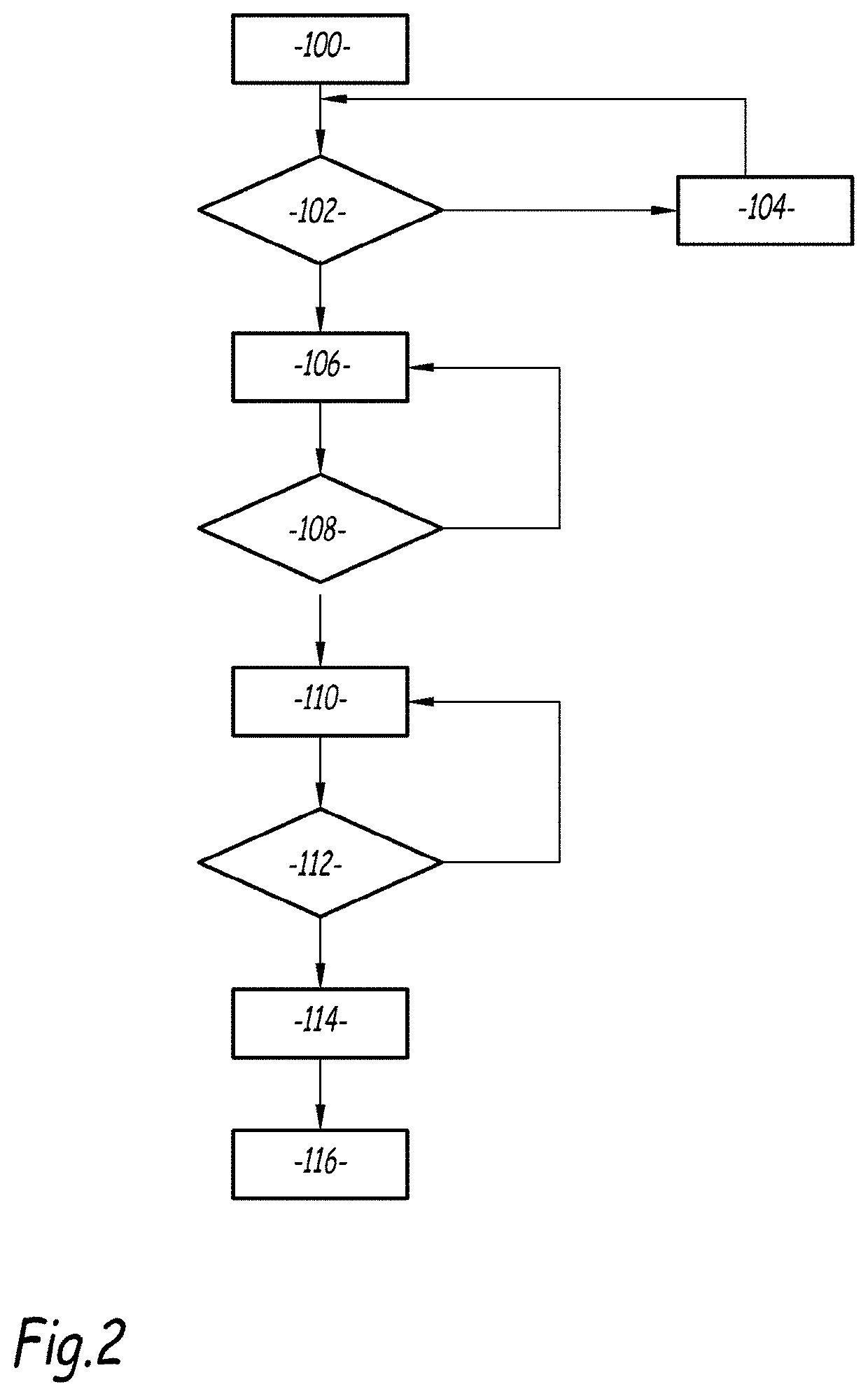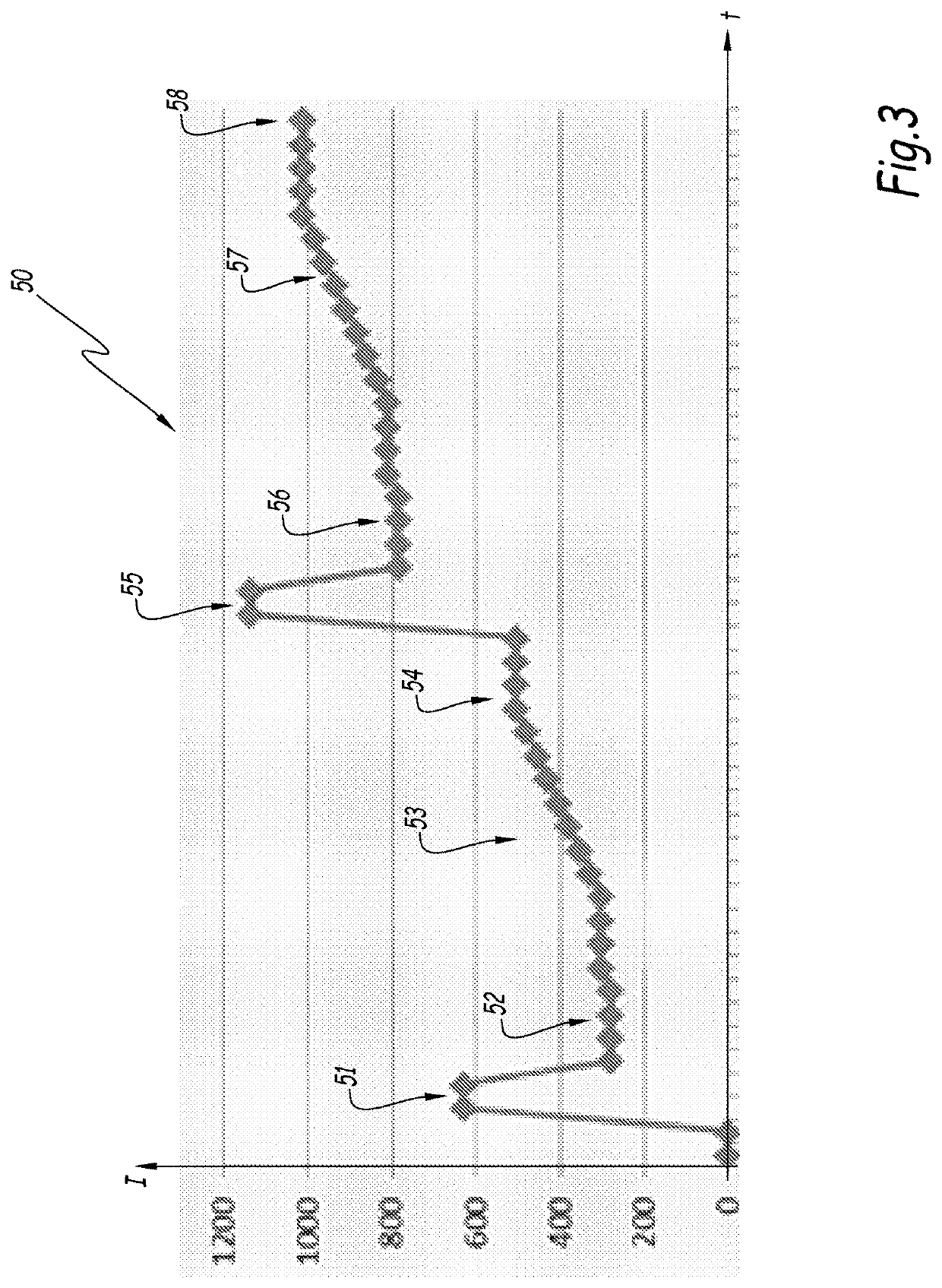A method for reducing the maximum inrush current of a compressor system comprising multiple asynchronous electrical motors and a compressor system for implementing this method
- Summary
- Abstract
- Description
- Claims
- Application Information
AI Technical Summary
Benefits of technology
Problems solved by technology
Method used
Image
Examples
Embodiment Construction
[0008]The object of the present disclosed embodiments is therefore to provide a compressor system and a method for controlling a compressor system comprising multiple asynchronous electrical motors for reducing the maximum inrush current, these method and apparatus being cost-effective and simple to implement.[0009]To that end, the disclosed embodiments relate to a method for controlling asynchronous electrical motors of a compressor system, this method comprising:[0010]receiving a command to start a first asynchronous electrical motor and a second asynchronous electrical motor of a compressor system;[0011]unloading said first and second motor, by operating respectively a first load control unit of the first motor and a second load control unit of the second motor, in order to reduce the mechanical load associated to said motors;[0012]starting the first motor and, only once the first motor is running at nominal speed, starting the second motor,[0013]loading both the first and second...
PUM
 Login to View More
Login to View More Abstract
Description
Claims
Application Information
 Login to View More
Login to View More - R&D
- Intellectual Property
- Life Sciences
- Materials
- Tech Scout
- Unparalleled Data Quality
- Higher Quality Content
- 60% Fewer Hallucinations
Browse by: Latest US Patents, China's latest patents, Technical Efficacy Thesaurus, Application Domain, Technology Topic, Popular Technical Reports.
© 2025 PatSnap. All rights reserved.Legal|Privacy policy|Modern Slavery Act Transparency Statement|Sitemap|About US| Contact US: help@patsnap.com



